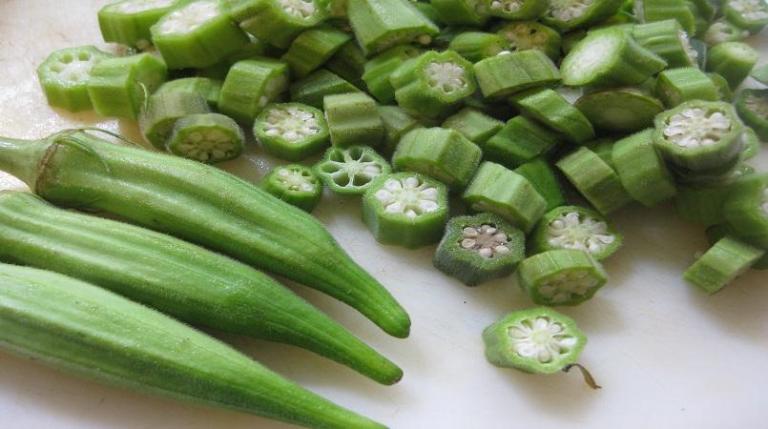
Okra. COURTESY
You probably love okra, and you don't even know it yet. Most people who think they don't like okra fall into two categories, according to Sheri Castle, author of ”The New Southern Garden Cookbook” and self-proclaimed okra lover.
“They either have never had it but have heard the horror stories, or tried to cook it and had such a bad outcome that they were afraid to try it again,” she said. Please don't put okra on the canceled list. This sometimes frustrating and amusingly shaped food which is actually the seed pod of the okra plant -- deserves a second chance. Okra originated in Africa, traveling along historic trade routes to South Asia and the Middle East before arriving in the Americas via enslaved people. Because of its long and globe-trotting history, you'll find okra as an ingredient in everything from gumbo in the US South to Japanese tempura. Okra's taste is mild and grassy, “which means it's a good choice for putting flavorful things on it,” Castle said. She compares its texture to that of asparagus or green beans, and like those two vegetables, okra can be transformed to suit your taste. Here are five reasons to love okra.
It’s good for you, of course
Not that you expected okra to be high in fat or cholesterol or calories, but it is most certainly none of those things. One cup of okra (about 8 pods) gives you 3 grams of fiber, which is more than you'll get in an equivalent amount of cauliflower or brown rice. It's also a good source of vitamins A and C and folate, as well as low in carbs. Okra has historically been a folk remedy for diabetes, and studies have shown that the plant can have a positive effect, decreasing blood sugar levels and inhibiting cholesterol production.
It’s easy to cook whole
If the “slime factor” has turned you away from okra in the past, there's one simple way to avoid it altogether: Cook your okra whole. Cutting into okra releases the mucilage, a natural sugar-protein substance that thickens when heated. Leaving okra whole keeps the mucilage inside, so “if you never pull the plug, you're halfway there,” Castle said. And if you love shishito peppers, you should give blistered okra a try. Whether seared in a skillet, oven-roasted, grilled or air-fried, the method for prepping whole okra is the same. Pat the okra pods very dry, then toss with olive oil and a pinch of salt and pepper. After the pods are charred and softened in spots, they're ready for the seasoning of your choice. Try a dipping sauce like a smoky paprika-shallot dip or sprinkle on a spicy chili-garlic blend
You can still get around the “goo” issue
There's no need to restrict yourself to only eating whole okra, however. Once you've mastered that method, it's time to get into the deep cuts -- okra cuts, that is. First, make sure the okra is very dry before slicing, because wet okra is the first cause of gooey, soggy okra. Castle's recommendation for cooking dishes that call for sliced okra is to sauté the okra on its own before adding other ingredients. “Let them cook very gently for about 3 minutes before you stir,” she said, “which is long enough for the heat to set the saccharides” in the mucilage. Try this recipe for charred okra succotash salad with sliced rounds of larger okra pods instead of small whole okra. You can also pre-cook okra in this way and freeze the sautéed okra to add to recipes down the line without worrying about getting slimed.






0 Comments